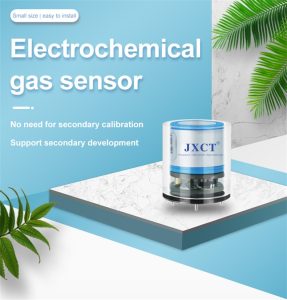Industrial refrigeration systems play a critical role in preserving perishable goods, maintaining process temperatures, and ensuring the efficient operation of various industrial processes. However, the use of refrigerants and other gases in these systems poses potential safety and environmental risks. Gas leaks can lead to health hazards for workers, equipment damage, and environmental pollution. To address these challenges, the development of next-generation gas detection technologies for industrial refrigeration is essential. This article explores the advancements in gas detection technology and their impact on improving safety, efficiency, and environmental responsibility in industrial refrigeration systems.

The Importance of Gas Detection in Industrial Refrigeration:
Industrial refrigeration systems rely on a variety of gases, including refrigerants such as ammonia, hydrofluorocarbons (HFCs), and carbon dioxide. While these gases are essential for cooling and preserving products, their leakage can pose significant risks. Gas leaks can lead to fire or explosion hazards, as well as health risks due to exposure to toxic or flammable gases. Additionally, refrigerant leaks contribute to environmental concerns, as some refrigerants have high global warming potential (GWP) and ozone depletion potential (ODP). Therefore, effective gas detection is crucial for ensuring the safety of workers, protecting equipment, and minimizing environmental impact.
Advancements in Gas Detection Technology:
Sensor Technology: Next-generation gas detection systems utilize advanced sensor technologies to detect a wide range of gases with high sensitivity and reliability. These sensors can detect multiple gases simultaneously, providing comprehensive monitoring capabilities for industrial refrigeration applications. b) Wireless Connectivity: Modern gas detection systems feature wireless connectivity, enabling real-time data transmission to a central monitoring station or mobile devices. This allows for remote monitoring, alert notifications, and data analysis, enhancing the overall safety and efficiency of industrial refrigeration operations. c) IoT Integration: Integration with the Internet of Things (IoT) enables seamless communication between gas detection systems and other industrial equipment. This integration facilitates automated response mechanisms, such as shutting down systems in the event of a gas leak, and enables predictive maintenance based on gas concentration trends. d) Data Analytics: Next-generation gas detection systems leverage data analytics to provide insights into gas concentration patterns, potential leak sources, and system performance. This data-driven approach allows for proactive maintenance and optimization of industrial refrigeration systems.
Benefits of Next-Generation Gas Detection for Industrial Refrigeration:
Enhanced Safety: Advanced gas detection systems improve worker safety by providing early detection of gas leaks and enabling prompt response measures. This minimizes the risk of accidents and exposure to hazardous gases in industrial refrigeration facilities. b) Environmental Responsibility: By detecting refrigerant leaks and other gas emissions, next-generation gas detection technology helps minimize environmental impact. Early leak detection allows for timely repairs, preventing the release of harmful gases into the atmosphere and reducing the overall carbon footprint of industrial refrigeration operations. c) Operational Efficiency: Real-time monitoring and data analytics enable proactive maintenance and optimization of industrial refrigeration systems. By identifying potential issues early on, gas detection systems contribute to the efficient operation and longevity of refrigeration equipment.
![]()
Regulatory Compliance and Standards:
Next-generation gas detection technology for industrial refrigeration aligns with industry standards and regulatory requirements aimed at ensuring workplace safety and environmental protection. Compliance with regulations such as the Occupational Safety and Health Administration (OSHA) standards and environmental regulations regarding refrigerant emissions is facilitated by the use of advanced gas detection systems.
Implementation Considerations:
Risk Assessment: Conducting a comprehensive risk assessment of industrial refrigeration systems is essential to identify potential gas leak sources and determine the most critical areas for gas detection deployment. b) System Integration: Integrating gas detection systems with existing industrial refrigeration infrastructure, control systems, and emergency response protocols requires careful planning and coordination to ensure seamless operation and effective response to gas leaks. c) Training and Maintenance: Proper training of personnel responsible for operating and maintaining gas detection systems is crucial for ensuring their effective utilization. Regular maintenance and calibration of sensors are also essential for reliable performance.
Conclusion:
Next-generation gas detection technology holds great promise for enhancing safety, environmental responsibility, and operational efficiency in industrial refrigeration. By leveraging advanced sensor technology, wireless connectivity, IoT integration, and data analytics, these systems offer comprehensive monitoring capabilities and enable proactive risk management. As industrial refrigeration continues to evolve, the adoption of next-generation gas detection technology will play a vital role in ensuring the safety of workers, protecting the environment, and optimizing the performance of refrigeration systems.
 : +86 155 8830 2704
: +86 155 8830 2704 : jxdziot@gmail.com
: jxdziot@gmail.com
